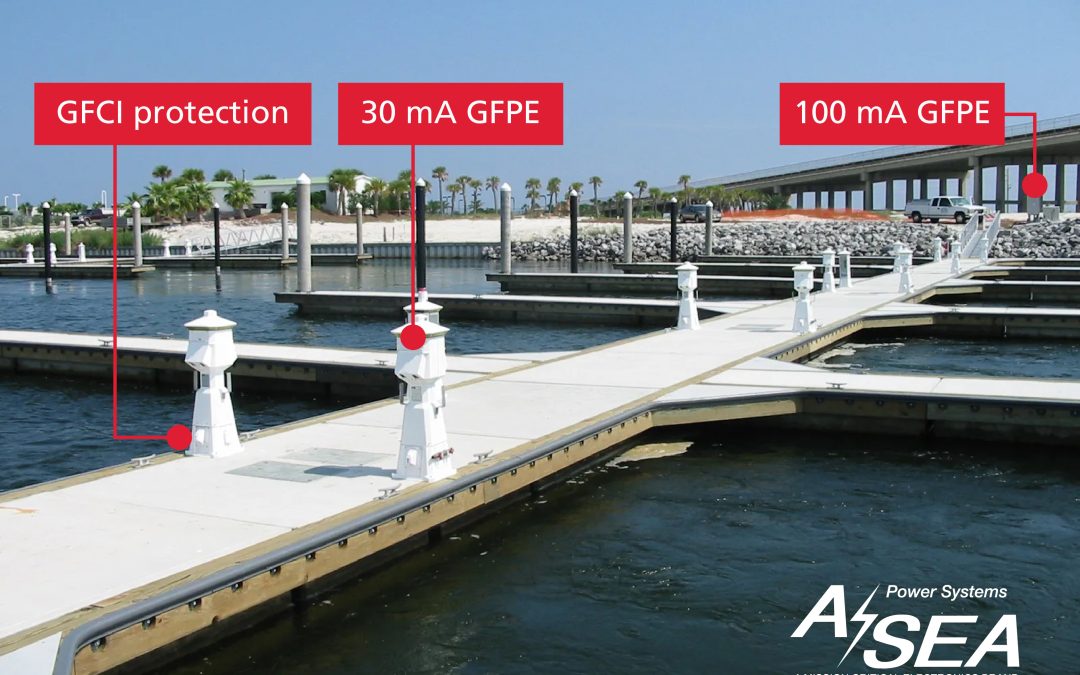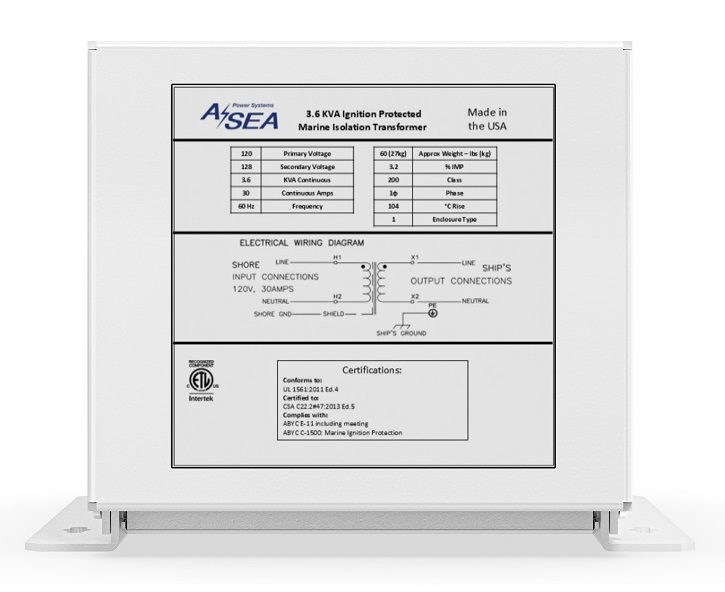If you’re a boater or marina operator, you’ve probably heard some buzz about NEC 555.35. But what does this regulation actually mean? And more importantly, how will the new NEC 555.36 change how you connect to shore power? Let’s break it down in simple terms.
What is NEC 555.35?
NEC 555.35 is a section of the National Electrical Code that specifically addresses Ground-Fault Protection of Equipment (GFPE) at marinas, boatyards, and docking facilities. This regulation was implemented to minimize the risk of electrical faults that could lead to hazardous conditions in marine environments. The primary function of NEC 555.35 is to detect and interrupt unintended leakage currents before they enter the water, thereby preventing Electric Shock Drowning (ESD) incidents that pose serious risks to people and marine life.
The introduction of this regulation stemmed from increasing awareness of electric shock hazards in marinas. The danger in water environments is substantially higher than on land, where an electrical fault typically results in a tripped breaker or blown fuse. In water, stray electrical currents can travel through the conductive medium, creating an invisible yet potentially fatal hazard for swimmers and those near boats and docks.
During the 2020 NEC development process, new GFCI thresholds were set to 100mA for feeder and branch circuit conductors while maintaining 30mA for shore power receptacles. These updated thresholds represent an attempt to balance safety requirements with operational feasibility. However, they also create a situation where the combined leakage of vessels powered through a feeder may still trip the breakers at the receptacle level, resulting in power disruptions at marinas.
The Upcoming NEC 555.36: What Changes in 2026?
The most significant update on the horizon is the introduction of NEC 555.36, which takes effect January 1, 2026. This new rule will mandate that every vessel must be able to plug into shore power without tripping the marina’s ground-fault breakers. Vessels failing this requirement may be denied shore power access, even as transient visitors.
Under NEC 555.36, marinas will be required to implement testing protocols to measure a boat’s electrical leakage before allowing it to occupy a slip. The financial implications of these tests can be substantial, with costs ranging from $300 for smaller vessels to potentially $10,000 for larger yachts. Consequently, if your vessel contributes to ground-fault leakage and repeatedly trips dock breakers, you may face both restricted shore power access and considerable financial penalties.
The increasing sensitivity of these ground-fault protection systems means that even minor electrical issues on your vessel—many of which may have gone unnoticed in the past, could now result in power disruptions for an entire dock or marina. This not only creates inconvenience for you as a boat owner but could also make it difficult to find available slips, as marinas enforce stricter electrical compliance rules.
How Can Boat Owners Avoid These Issues?
One of the most effective ways to ensure compliance with NEC regulations is to install an isolation transformer. These devices create a physical barrier between shore power and the vessel, ensuring that any potential faults are contained within the boat’s electrical system.
Isolation transformers operate by transferring electrical energy through electromagnetic induction rather than a direct electrical connection, effectively eliminating the physical path for leakage current. Additionally, these devices provide voltage stabilization by compensating for fluctuations in shore power and filtering electrical noise, delivering a cleaner and more consistent power supply for sensitive onboard electronics and systems.
For boat owners, an isolation transformer offers four major benefits:
- Safety: Prevents the vessel from sending unintended currents into the water, reducing the risk of Electric Shock Drowning (ESD).
- Regulatory Compliance: Ensures the boat meets NEC 555.35 and NEC 555.36 requirements, preventing dockside breaker trips and shore power restrictions.
- Financial Protection: Avoids costly penalties and unexpected marina fees for non-compliance.
- Convenience: Reduces the risk of power disruptions, ensuring seamless shore power access and preventing inconvenient troubleshooting at the dock.
Compliance with NEC 555.35 and the upcoming NEC 555.36 is not just about meeting regulatory requirements it addresses a critical safety concern in the marine environment. Electric Shock Drowning remains a serious issue, and ensuring that marina electrical systems meet established safety standards is a shared responsibility among facility operators and vessel owners alike. Investing in the right equipment, such as an isolation transformer, can protect your vessel, reduce liability, and ensure smooth sailing at any marina.
Contact our technical specialists today to learn about ASEA’s new isolation transformer designed as per marine standards and protect your valuable investment for years to come.


